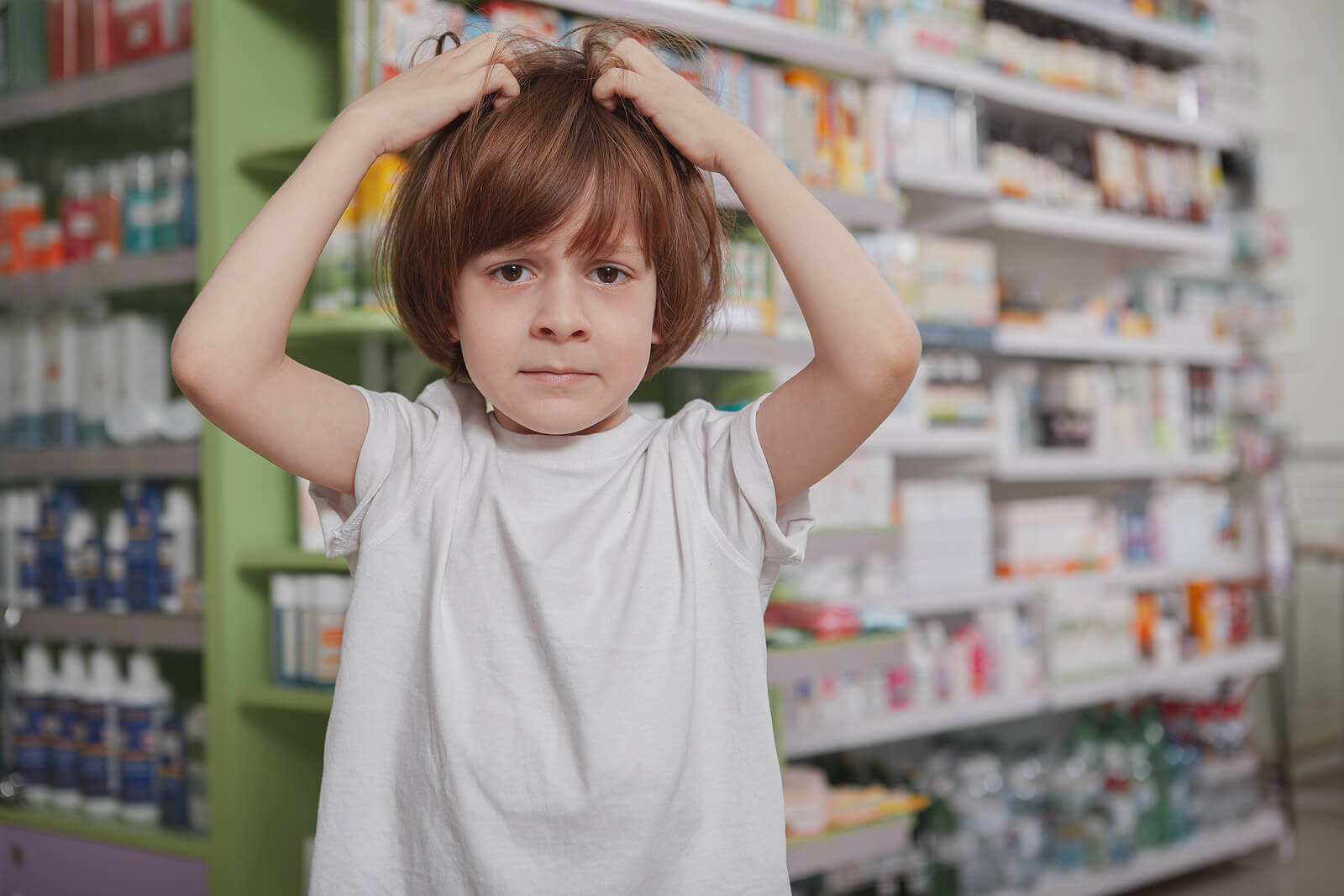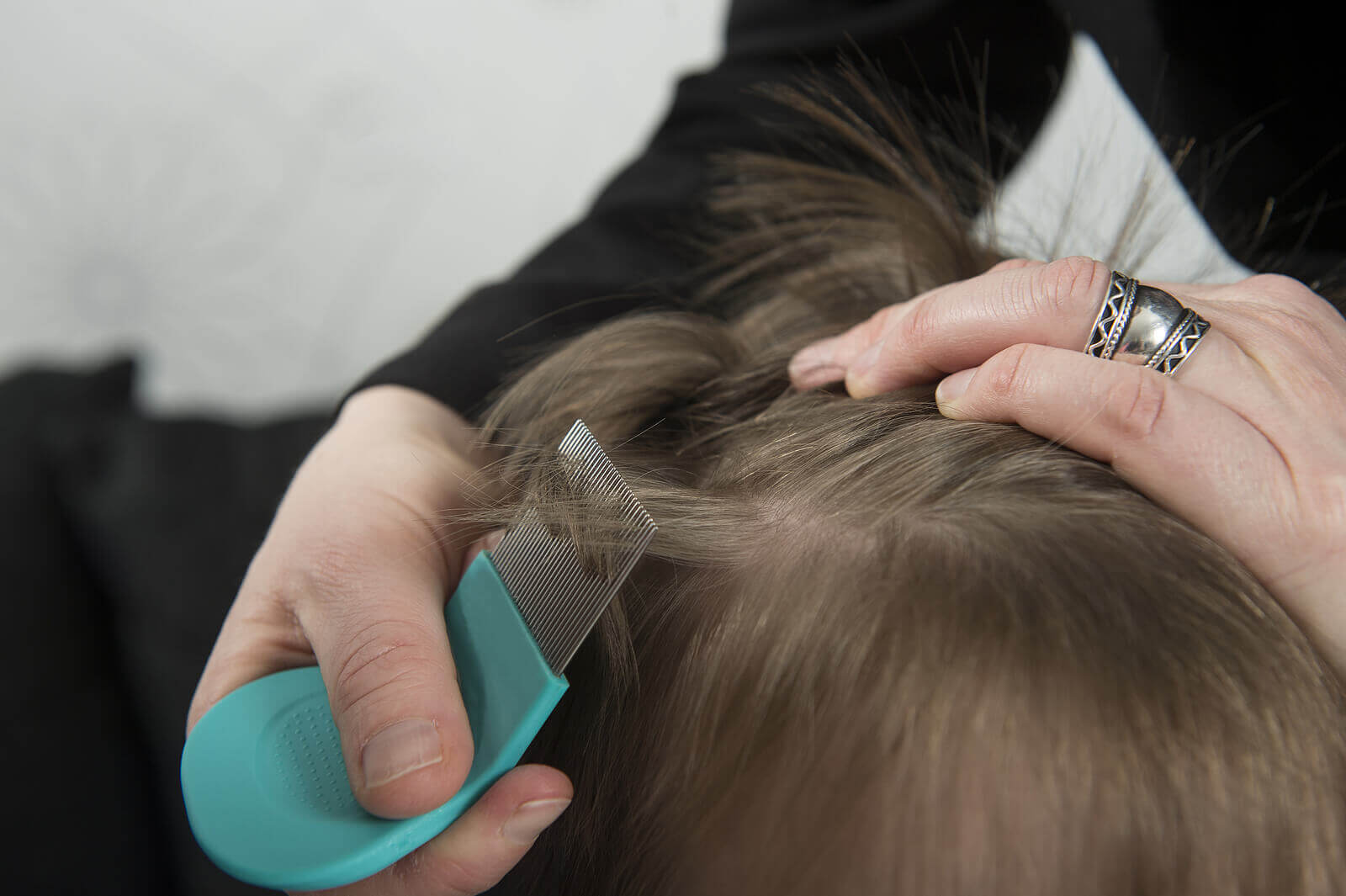Does Apple Cider Vinegar Work Against Lice?


Written and verified by the dermatologist Maria del Carmen Hernandez
Lice infestation is more common in children than in adults, as youngsters have frequent contact between their heads or share clothing and toys. Apple cider vinegar is often considered effective in preventing the entry of these parasites, but is it really useful in combating head lice?
Children and lice
Head lice is a persistent and easily contagious problem that occurs more frequently in school-age children.
Lice can’t fly or jump, and transmission occurs through head-to-head contact or by sharing clothing or accessories, such as hats.
These parasites are very small in size and they reproduce and transmit quickly. Once on the scalp, they suck blood and live attached to the hair in the areas of greatest heat, shelter, and humidity. In general, they feed every 3 to 6 hours on the child’s blood and, while they bite, inject their saliva.

Clinical manifestations of pediculosis
The itching that characterizes this infestation is produced when the child is sensitized to antigens in the saliva of the louse. This reaction is known as immune-mediated hypersensitivity.
In general, itching appears 1 or 2 days after the infection. The most common locations of lesions are on the back of the neck and around the ears.
It’s important to note that scratching induces even more itching, which can favor the occurrence of a secondary bacterial infection.
Read also: Pediculosis in Children: What You Need to Know About Lice
Does apple cider vinegar work against lice?
While treatment options for head lice include oral agents and topical insecticides, apple cider vinegar is often considered helpful in improving this condition. However, it’s likely not as effective as it’s popularly considered.
According to a study published in the Journal of Pediatric Nursery, the effectiveness of using vinegar to combat lice isn’t supported. In fact, it was compared to five different natural remedies:
- Olive oil
- Isopropyl alcohol
- Petroleum jelly
- Mayonnaise
- Butter
Among all of them, vinegar was the least effective method to suppress the hatching of the nits or to eliminate the lice. Still, none of the other remedies were truly effective for that purpose either.
Another publication by the Penn State Department of Entomology states that vinegar isn’t effective in removing nits from hair.
However, the advantage that some natural remedies provide is avoiding the potentially toxic effects of insecticide use in young children.
So what treatments are effective?
The therapeutic management of pediculosis includes oral drugs, complementary hygiene measures, ointments, creams, and shampoos.
One of the best known and most effective allies to eliminate lice and nits is the fine comb, called a nit comb.
In addition to this element, an article from Parasitology Research supports the use of tea tree oil for its insecticidal properties.
On the other hand, the drugs that have shown effectiveness as pediculicides are the following:
- Prescription Drugs: Lindane, Ivermectin, Benzyl Alcohol.
- Over-the-counter shampoos: Those that contain pyrethrin or permethrin.
Pyrethrin is a natural pesticide that is approved for use in children over 2 years of age.
In contrast, permethrin is a synthetic pesticide similar to pyrethrin but is approved for use over 2 months.
In turn, benzyl alcohol is indicated for pediculosis in children from 6 months.
Unlike the rest, lindane is used as a last resort because it can cause serious side effects, such as seizures and death. Its use in babies isn’t recommended.
You may be interested: How to Prevent Lice at School
Hygienic measures to combat lice

In addition to using the prescribed medications, there are other strategies that can be implemented to manage a lice infestation. According to the Centers for Disease Control and Prevention, the most recommended are the following:
- Use a fine comb.
- Check if there’s someone else in the family that’s infested.
- Vacuum upholstered furniture and floors.
- Rinse bedding and stuffed animals with hot soapy water.
- Wash combs and brushes in hot water for 10 minutes.
- Don’t use pesticides in the home, as lice can’t survive for more than a few days outside of the head.
Apple cider vinegar as a last option
In conclusion, although apple cider vinegar hasn’t been shown to work against lice, many people report that it’s effective when using it.
Therefore, if you0re going to use apple cider vinegar to eradicate lice, keep in mind that it will probably not yield positive results. In this case, consult your doctor so that the professional indicates the most effective and least toxic way to combat lice.
Lice infestation is more common in children than in adults, as youngsters have frequent contact between their heads or share clothing and toys. Apple cider vinegar is often considered effective in preventing the entry of these parasites, but is it really useful in combating head lice?
Children and lice
Head lice is a persistent and easily contagious problem that occurs more frequently in school-age children.
Lice can’t fly or jump, and transmission occurs through head-to-head contact or by sharing clothing or accessories, such as hats.
These parasites are very small in size and they reproduce and transmit quickly. Once on the scalp, they suck blood and live attached to the hair in the areas of greatest heat, shelter, and humidity. In general, they feed every 3 to 6 hours on the child’s blood and, while they bite, inject their saliva.

Clinical manifestations of pediculosis
The itching that characterizes this infestation is produced when the child is sensitized to antigens in the saliva of the louse. This reaction is known as immune-mediated hypersensitivity.
In general, itching appears 1 or 2 days after the infection. The most common locations of lesions are on the back of the neck and around the ears.
It’s important to note that scratching induces even more itching, which can favor the occurrence of a secondary bacterial infection.
Read also: Pediculosis in Children: What You Need to Know About Lice
Does apple cider vinegar work against lice?
While treatment options for head lice include oral agents and topical insecticides, apple cider vinegar is often considered helpful in improving this condition. However, it’s likely not as effective as it’s popularly considered.
According to a study published in the Journal of Pediatric Nursery, the effectiveness of using vinegar to combat lice isn’t supported. In fact, it was compared to five different natural remedies:
- Olive oil
- Isopropyl alcohol
- Petroleum jelly
- Mayonnaise
- Butter
Among all of them, vinegar was the least effective method to suppress the hatching of the nits or to eliminate the lice. Still, none of the other remedies were truly effective for that purpose either.
Another publication by the Penn State Department of Entomology states that vinegar isn’t effective in removing nits from hair.
However, the advantage that some natural remedies provide is avoiding the potentially toxic effects of insecticide use in young children.
So what treatments are effective?
The therapeutic management of pediculosis includes oral drugs, complementary hygiene measures, ointments, creams, and shampoos.
One of the best known and most effective allies to eliminate lice and nits is the fine comb, called a nit comb.
In addition to this element, an article from Parasitology Research supports the use of tea tree oil for its insecticidal properties.
On the other hand, the drugs that have shown effectiveness as pediculicides are the following:
- Prescription Drugs: Lindane, Ivermectin, Benzyl Alcohol.
- Over-the-counter shampoos: Those that contain pyrethrin or permethrin.
Pyrethrin is a natural pesticide that is approved for use in children over 2 years of age.
In contrast, permethrin is a synthetic pesticide similar to pyrethrin but is approved for use over 2 months.
In turn, benzyl alcohol is indicated for pediculosis in children from 6 months.
Unlike the rest, lindane is used as a last resort because it can cause serious side effects, such as seizures and death. Its use in babies isn’t recommended.
You may be interested: How to Prevent Lice at School
Hygienic measures to combat lice

In addition to using the prescribed medications, there are other strategies that can be implemented to manage a lice infestation. According to the Centers for Disease Control and Prevention, the most recommended are the following:
- Use a fine comb.
- Check if there’s someone else in the family that’s infested.
- Vacuum upholstered furniture and floors.
- Rinse bedding and stuffed animals with hot soapy water.
- Wash combs and brushes in hot water for 10 minutes.
- Don’t use pesticides in the home, as lice can’t survive for more than a few days outside of the head.
Apple cider vinegar as a last option
In conclusion, although apple cider vinegar hasn’t been shown to work against lice, many people report that it’s effective when using it.
Therefore, if you0re going to use apple cider vinegar to eradicate lice, keep in mind that it will probably not yield positive results. In this case, consult your doctor so that the professional indicates the most effective and least toxic way to combat lice.
All cited sources were thoroughly reviewed by our team to ensure their quality, reliability, currency, and validity. The bibliography of this article was considered reliable and of academic or scientific accuracy.
- Head lice. Centers for Disease Control and Prevention. [Internet ] Disponible en: https://www.cdc.gov/parasites/lice/head/gen_info/faqs_treat.html
- Human lice. Penn State Department of Entomology. [Internet ] Disponible en: https://extension.psu.edu/human-lice
- Home remedies to control headd lice. Journal of Pediatric nursing. [Internet ] Disponible en: https://www.pediatricnursing.org/article/S0882-5963(04)00139-3/fulltext
- Di Campli, Emanuela et al. Activity of tea tree oil and nerolidol alone or in combination against Pediculus capitis (head lice) and its eggs. Parasitology research vol. 111,5 (2012): 1985-92. doi:10.1007/s00436-012-3045-0
This text is provided for informational purposes only and does not replace consultation with a professional. If in doubt, consult your specialist.








